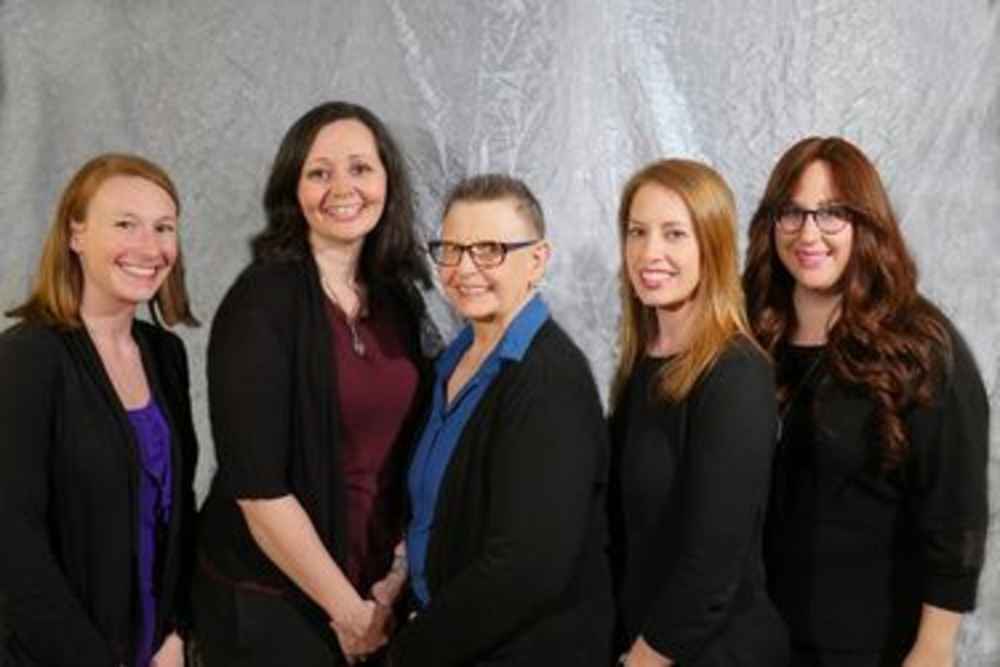Audiology and Hearing Aids

Audiology Services
Our staff of licensed and certified audiologists provide the following services:
- Comprehensive hearing evaluations.
- Hearing aid dispensing, programming, and repair.
- Take ear impressions to create custom ear plugs for swimming and/or noise protection.
- Testing and diagnosis of balance/dizziness disorders using videonystagmography (VNG) to assess the strength of the balance system.
Types of Hearing Aids
There are several different types of hearing aids available. Our audiologists will work with you to find the best option for you based on your audiologic needs, cosmetic concerns, and budget.
Behind the Ear/Receiver in the Ear (BTE/RITE) Hearing Aids
This hearing aid fits discreetly behind the ear and is coupled to the ear via a tube (which is smaller with the RITE style). The part inserted into the ear canal is either a small open dome or a traditional earmold made from acrylic or silicone. Earmolds are available in a variety of styles and colors suitable for any degree of loss or type of hearing instrument.Volume controls/program buttons are standard. Bluetooth® connectivity is available with this type of hearing aid.
In the Ear (ITE)
This hearing aid fits discreetly in the ear. It can be used to fit most any hearing loss from mild to severe, and is easy to use with moderately sized controls and battery. Volume controls/program buttons are available. Bluetooth® connectivity is available with this type of hearing aid.
In the Canal (ITC)
This hearing aid is roughly 1/3 the size of ITE aids and are more cosmetically appealing due to the reduced size. It can be used to fit mild to moderately severe hearing losses, but requires greater dexterity to manipulate the smaller controls and battery. Some options are limited due to the small size of the aid. Volume controls OR program buttons are available. Bluetooth® connectivity is available with this type of hearing aid.
Completely in the Canal (CIC)
CIC hearing aids are extremely small and are virtually unseen in the ear canal, depending on ear canal size. They can be used to fit many hearing losses, but generally are not used for severe to profound cases. They require good dexterity in order to insert the hearing aid and batteries. Some ear canal shapes or sizes may preclude fitting with a CIC instrument. Options are limited due to the small size of the aid. There is no Bluetooth capability. Program buttons are available from some manufacturers, but depend highly on the size of the ear canal.
Invisible in the Canal (IIC)
IIC hearing aids are even smaller than the CIC style. While cosmetically appealing, they are not used for moderate to profound cases. They require excellent dexterity in order to insert the hearing aid and batteries. Some ear canal shapes or sizes may preclude fitting with an IIC instrument. No options (program button, volume control, or Bluetooth) are available on this style.
Payment Options
In the event that your insurance does not cover the cost of the devices, payment options include cash, check, credit card, as well as a convenient payment plan. The payment plan offers several payment timelines. You can apply for the plan by clicking here.
“I received excellent care at Chesapeake ENT. Their prompt response and cheerful attitudes made for a wonderful experience. All of the audiologists were very helpful. Especially Dr. Laura Toll, her knowledge of hearing aids and the new technology offered made for an easy decision."
★★★★★
- Tanya
"Was very knowledgeable and helpful."
★★★★★
- Saafir
"Very courteous and on time."
★★★★☆
- Pauline




